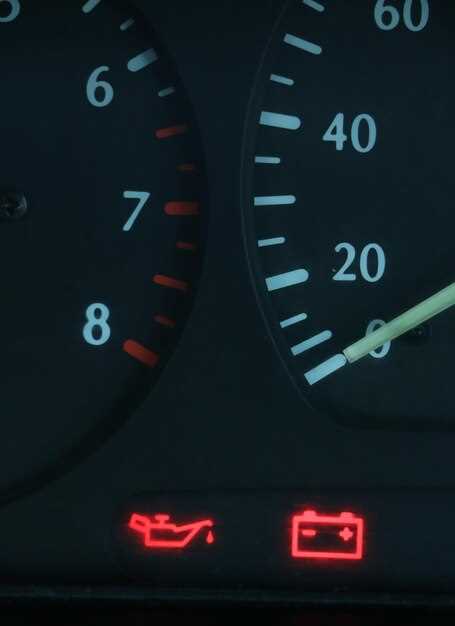
The differential is a crucial component in performance cars, responsible for distributing power from the engine to the wheels while allowing them to rotate at different speeds. This functionality is particularly important during cornering, where the wheel on the outside of the turn travels a greater distance than the one on the inside. However, like any mechanical part, differentials can experience failure, and early identification of these signs is essential to avoid severe damage and maintain optimal performance.
One of the most notable indicators of differential failure is an unusual noise coming from the rear or front of the vehicle, depending on the type of differential used. These noises can manifest as grinding, whining, or clunking sounds, which may indicate issues such as worn bearings, damaged gears, or insufficient lubrication. Understanding these auditory signals is vital for car enthusiasts and performance drivers, as they can often be the first warning signs of a problematic differential.
Additionally, physical symptoms, such as vibrations felt through the vehicle or abnormal handling characteristics, can suggest differential issues. If you notice your car struggling to maintain traction or changing direction unpredictably, it may be time to investigate the differential system further. Assessing these signs early on can save both time and money, ensuring your performance car remains in peak condition on the road or track.
Understanding Differential Noise: Types and Causes

The differential in performance cars plays a crucial role in transferring power from the engine to the wheels. However, it can also be a source of various noises, which may indicate underlying issues. Understanding the types and causes of differential noise can help in diagnosing potential problems before they escalate.
Here are the common types of differential noise:
- Whining Noise: Often indicates worn gears or insufficient lubrication. This sound is usually more noticeable during acceleration or deceleration.
- Clunking Noise: A clunking sound may suggest loose or damaged components within the differential. It can also result from problems in the mounting hardware or driveshaft.
- Clicking Noise: Typically associated with issues in the limited-slip differential or CV joints. It may occur during turns, as the differential struggles to distribute power evenly.
- Humming Noise: A continuous humming sound might indicate worn bearings. This noise can become more pronounced at higher speeds and can lead to further damage if not addressed.
Various causes can lead to differential noise:
- Poor Lubrication: Insufficient or contaminated differential fluid can increase friction and wear, resulting in noise.
- Wear and Tear: Over time, the components within the differential may wear out, leading to gear misalignment and noise.
- Improper Installation: If the differential was not correctly installed, it may lead to uneven wear and excessive noise.
- Drivetrain Issues: Problems in other drivetrain components, such as the driveshaft or CV joints, can manifest as differential noise.
Regular maintenance and timely inspections can help identify these issues early, making it crucial for performance car owners to be aware of differential noise and its implications on vehicle performance.
Key Symptoms of Differential Wear in High-Performance Vehicles
One of the most noticeable signs of differential wear in high-performance vehicles is the presence of unusual noise. Drivers may hear grinding, whining, or clunking sounds when turning or accelerating. These noises indicate that the internal components of the differential may be worn or damaged, often due to insufficient lubrication or prolonged stress on the system.
Another critical symptom is uneven tire wear. A differential that is not functioning correctly can cause one wheel to rotate differently than the other, leading to rapid and uneven wear patterns on tires. It is essential to monitor tire condition, as this issue can deteriorate handling and performance over time.
Additionally, if the vehicle experiences a noticeable decrease in handling stability, particularly during cornering, it may suggest differential problems. This instability is often caused by improper power distribution between the wheels, leading to a loss of traction and control, especially in high-speed scenarios.
Leaking differential fluid is another important indicator of wear. If fluid is pooling under the vehicle or if the fluid level appears low, it may indicate a seal failure or internal damage, which can compromise the differential’s operation.
Finally, a significant increase in vibration during acceleration can also signal differential wear. Excess vibrations often result from worn gears or components within the differential, which can transmit shocks through the drivetrain. Addressing these symptoms early can prevent further damage and maintain the performance integrity of high-performance vehicles.
Diagnostic Techniques for Differential Problems
Diagnosing differential issues in performance cars requires a systematic approach to identify the underlying problems associated with noise and wear. One of the first steps in the diagnostic process is to conduct a thorough visual inspection of the differential housing and components. Look for signs of oil leaks, which may indicate sealing failures, and assess for any visible damage or irregular wear patterns on the gears and bearings.
Listening for anomalous noise during vehicle operation is critical. Unusual sounds such as grinding, whining, or clunking can signal differential problems. A high-pitched whine might suggest wear on the ring and pinion gears, whereas a clunking noise could indicate loose components or worn mounts. These sounds often change with vehicle speed or load, providing further clues to the nature of the issue.
Next, employ a road test to evaluate the performance of the differential under various driving conditions. During acceleration, deceleration, and cornering, pay attention to any vibrations or changes in handling that could indicate differential wear. Additionally, a differential temperature check can provide insight; excessive heat usually indicates friction caused by wear or inadequate lubrication.
Utilizing diagnostic tools such as a stethoscope or vibration analyzer can enhance the detection of internal issues. These tools help pinpoint the location of noise, allowing technicians to determine whether it originates from the differential or other drivetrain components. Furthermore, magnetic particle inspection and dye penetration testing can reveal hairline cracks or severe wear that may not be visible during a routine inspection.
In cases of suspected wear, it is essential to analyze the differential fluid. Check for metal shavings, which can indicate significant wear on gears and bearings. Conducting a fluid analysis can also provide critical information regarding the condition of the fluid and the presence of contaminants that may affect performance.
By combining visual inspections, auditory assessments, and technical measurements, technicians can effectively diagnose differential problems, ensuring that performance cars operate optimally and maintain their intended levels of performance.
Impact of Differential Failure on Vehicle Performance
The differential plays a crucial role in the overall performance of a vehicle, particularly in performance cars that demand high levels of precision and control. It is responsible for distributing power from the engine to the wheels while allowing them to rotate at different speeds during turns. A failure in the differential can significantly impact vehicle handling, stability, and overall performance.
As differential components experience wear over time, various symptoms may arise that indicate a potential failure. These symptoms can compromise vehicle performance in several ways:
| Symptoms of Differential Failure | Impact on Performance |
|---|---|
| Unusual noises (grinding or whining) | Indicates internal damage, which can lead to loss of power transfer and control. |
| Difficulty in turning | Compromises handling, increasing the likelihood of skidding or loss of traction. |
| Leaking fluid | Reduces lubrication, accelerating wear and increasing the risk of complete failure. |
| Vibrations during acceleration | Can lead to uneven power distribution and decreased driving stability. |
| Increased tire wear | Results from uneven torque distribution, impacting grip and driving efficiency. |
Furthermore, a failing differential can cause catastrophic consequences if not addressed promptly. As components wear and fail, they can lead to more significant issues within the drivetrain, increasing repair costs and downtime. Regular maintenance and timely inspections are essential to ensure that the differential operates smoothly, safeguarding not only vehicle performance but also driver safety.
In summary, understanding the signs of differential wear and the resulting impact on vehicle performance is vital for owners of performance cars. Addressing differential issues proactively can enhance driving experiences and prolong the life of the vehicle.
Preventative Maintenance Tips for Differentials
Regular inspection of differentials is crucial to identify early signs of wear and prevent potential failures. Check for any unusual noise when driving, as this can indicate issues such as low lubrication levels or damaged gears.
Maintaining proper fluid levels is essential. Differential fluid lubricates the gears and helps dissipate heat. Over time, this fluid can break down, leading to increased wear. Schedule fluid changes according to the manufacturer’s recommendations to ensure optimal performance.
Inspect seals and gaskets regularly for leaks. Any loss of fluid can cause inadequate lubrication, resulting in noise and accelerated wear of internal components. Replacing worn seals promptly can save you from costly repairs.
Pay attention to the overall behavior of your vehicle. If you notice any abnormal handling characteristics or vibrations, it may be time for a differential inspection. Addressing these symptoms early can prevent further damage and ensure longevity.
Finally, consider using high-performance lubricants designed for your specific vehicle. These advanced formulas can provide enhanced protection against wear and thermal breakdown, contributing to a longer lifespan for your differential.
When to Seek Professional Help for Differential Issues

Performance cars are engineered for precision, and the differential plays a crucial role in delivering that performance. However, there are key indicators that you should not ignore. If you begin to notice unusual noises coming from the rear or front axle areas, it may indicate differential problems. Sounds such as grinding, clunking, or whining can suggest wear on the gears or bearings, which, if left unaddressed, can lead to catastrophic failure.
Another significant sign of trouble is when you experience a change in handling. If your car feels unstable during turns or exhibits uneven tire wear, it might be time to have a professional inspect the differential. Excessive wear in the differential components can compromise the car’s performance and safety.
Fluid leaks are also a critical warning sign. A pooling of differential fluid beneath your vehicle suggests a seal or gasket failure. This loss of lubricant can lead to increased friction and further degradation of the internal components.
If you are experiencing any combination of these symptoms, it is essential to seek professional help as soon as possible. Ignoring these signs can not only affect your car’s performance but may result in more costly repairs down the line due to extensive damage caused by differential failure.
